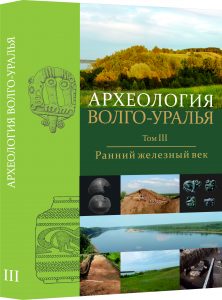Archaeology of the Volga-Urals. Vol. 3. Early Iron Age/ Institute of Archaeology named after A. Kh. Khalikov, Tatarstan Academy of Science; Sitdikov, A. Kh., Chizhesky, A.A. (eds.). – Kazan: Institute of Archaeology named after A. Kh. Khalikov, Tatarstan Academy of Sciences, 2021. – 676.: il.
Archaeology of the Volga-Urals. Vol. 3. Early Iron Age/ Institute of Archaeology named after A. Kh. Khalikov, Tatarstan Academy of Science; Sitdikov, A. G., Chizhesky, A.A. (eds.). – Kazan: Institute of Archaeology named after A. Kh. Khalikov, Tatarstan Academy of Sciences, 2021. – 676.: il.
ISBN: 978-5-9690-1951-6, 978-5-9690-0954-7
DOI: https://doi.org/10.24852/978-5-9690-0951-6.2021.3
The third volume on the “Archaeology of the Volga-Urals” presents the results of the latest studies of the early Iron Age. The volume covers the antiquities of the 1st millennium BC, from the 9th century BC to the early 1st millennium AD until the 2nd/3rd centuries AD, and describes the main archaeological cultures of the Volga-Urals. The primary focus of the first part of the book is the first phase of the Early Iron Age, when the early nomads – the Scythians, Savromats, and others were widespread in the steppe zone, and the carriers of the Ananyino, Gorodets and other archaeological cultures, who were part of the periphery of the Scytho-Siberian world, lived in the forest zone. The cultures of the second phase of the Early Iron Age are addressed in the second part of the volume, which includes the Sarmatian world in the steppe zone and the Post-Ananyino world in the forest zone. The publication features detailed characteristics of the settlement and burial monuments, residential buildings, economy and social relations of the population of the early Iron Age both in the steppe and forest landscape zones.

